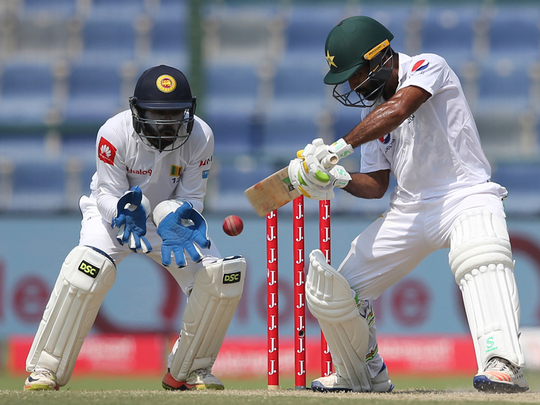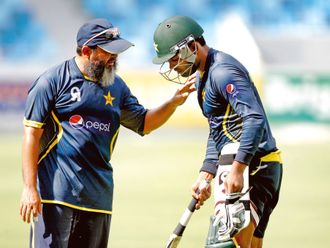
Dubai: From 2010, Pakistan had never lost a Test series in their adopted home grounds in the UAE and had virtually earned the ‘unbeatable in UAE’ tag. It all ended on Tuesday as they crashed to a 2-0 series defeat to Sri Lanka.
Pakistan, through a late fightback in the second Test, bowled out Sri Lanka for a paltry 96 and tried their best to draw the series after being beaten in the first Test by 21 runs. Sri Lanka fought strongly and won the second Test too by 68 runs capitalising on the many drawbacks in the Pakistan ranks.
Pakistan skipper Sarfraz Ahmad candidly admitted: “I think we are not playing good cricket. Sri Lanka played much better cricket than us.”
Coach Mickey Arthur too confessed that he messed up in the selection of the playing XI for the second Test.
Gulf News takes a look at five factors behind Pakistan’s poor show in a Test series here:
Poor batting show
Pakistan’s batsmen did not apply themselves in either Test match as all their top order batsmen refused to play a long innings. Those who settled down and scored fifties failed to convert them into centuries. The result of it was that most of the partnerships were small and not big enough to post a big score. On the other hand, the Sri Lankan batsmen made sure to play long innings, with good support from even their allrounders, resulting in good partnerships which gave them a total of over 400 in both Test matches. Captain Sarfraz admitted after the defeat: “We lacked in the batting. We didn’t play a big innings and that is what cost us.”
Wrong selection
Pakistan expected their pacers to deliver. They went in with only a specialised spinner in Yasir Shah who had to bear the burden of the attack with no support from the other end. Their best pacer Mohammad Amir, who was suffering from a shin injury, was nowhere near his best.
The Pakistan team management did not have the confidence in their younger spinners other than Yasir and refused to play them. Off spinner Bilal Asif or left-arm Mohammad Asgar could have been played in the XI instead of trying out part-time spinners Asad Shafiq and Haris Sohail. Even Sohail, who was tried out towards the close of Sri Lanka’s second innings, took three wickets in one over. Coach Arthur admitted candidly that he messed up going in with only one specialist spinner.
Fear of Herath
The Pakistan batsmen approached Sri Lankan spinner Rangana Herath with a sense of fear and the wily veteran fully capitalised on this fear to dominate the batsmen. Due to their fear of Herath, most of the Pakistan batsmen were ultra-defensive.
No effort was made to find a counter-plan to tackle Herath, though some batsmen remarked that the best way to tackle him is by attacking him. To make matters worse, off-spinner Dilruwan Perera bowled superbly and prevented the Pakistan batsmen from getting any relief from Herath’s guiles and accurate length. To make it even more difficult, the Sri Lankan pacers bowled brilliantly and much better than the Pakistani pacers.
Absence of Younis, Misbah
Pakistan could not overcome the absence of Younis Khan and Misbah-Ul Haq, who had been their batting mainstays in Test cricket for many years. The young batsmen who have come into the team should have watched how Younis and Misbah dominated bowling attacks on UAE wickets.
Much was expected off young Babar Azam, who scored just 28 and three in Abu Dhabi and 8 and 0 in Dubai. Openers Shan Masood and Sami Aslam could have played big knocks too but it wasn’t to be. While the Sri Lankan batsmen came up with decent scores even the down the order, Pakistan’s last four batsmen, starting from Mohammad Amir, did not contribute much with the bat.
Focus on limited overs cricket
Most of the Pakistan players could not adapt to Test cricket as they hadn’t overcome the euphoria of their Champions Trophy limited-overs cricket triumph. One of the reasons their batsmen could not build innings or the bowlers’ failure to bowl a Test match line was due to the lack of practice in the longer version of the game before arriving in the UAE.
Sri Lanka arrived here after a tough Test series against India, while Pakistan arrived here soon after their Twenty20 matches against World XI. If Pakistan do not prepare for Test cricket with at least four-day matches after a limited over series, the results may turn out to be the same in the future as well.











